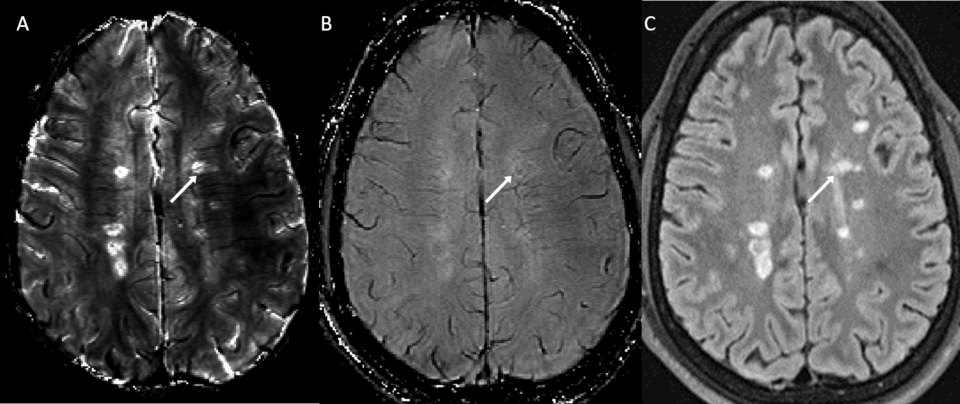Our patients objective is to eliminate gadolinium (Gd) injections in routine follow-up magnetic resonance imaging (MRI) of multiple sclerosis (MS) using quantitative susceptibility mapping (QSM) as a direct response to calls issued by the National Institutes of Health (NIH) and the Food and Drug Administration (FDA) to re-evaluate repetitive Gd administration to patients. We have pioneered QSM generated by processing the often-discarded phase data from gradient echo (GRE) MRI. We have discovered that iron-containing proinflammatory microglia often accumulate at the MS lesion rim. We have initiated applications of QSM in studying MS, and have demonstrated that QSM can detect iron rims around MS lesions. We have obtained preliminary data in MS patients that susceptibility increase, as measured on QSM, can accurately indicate blod-brain barrier closure, as supported by the biophysics of myelin digestion, myelin debris removal and iron accumulation.
To translate the lab’s pathophysiologic and biophysical insights into patient care, the lab proposes a no-Gd MRI using QSM to follow up MS patients. The lab will perform an economical multicenter study by adding a five-minute GRE sequence to the current MS MRI follow-up protocol without incurring any scan costs to the NIH. The lab will employ a hierarchical approach to assess the technical efficacy, diagnostic accuracy, diagnostic thinking, and therapeutic efficacy of the proposed QSM-based no-Gd MRI. Accordingly, the lab plans to achieve its objective through specific aims that follow. Aim 1: Establish susceptibility increase due to myelin digestion by macrophages. Aim 2: Optimize the technical efficacy of no-Gd MRI to follow up MS patients. Aim 3: Evaluate the diagnostic accuracy, diagnostic thinking and therapeutic efficacy of QSM based no-Gd MRI.


